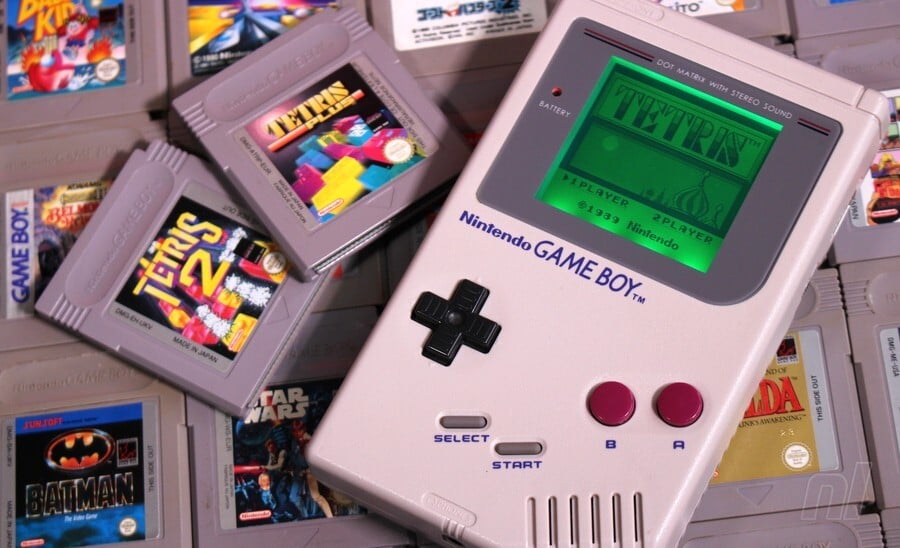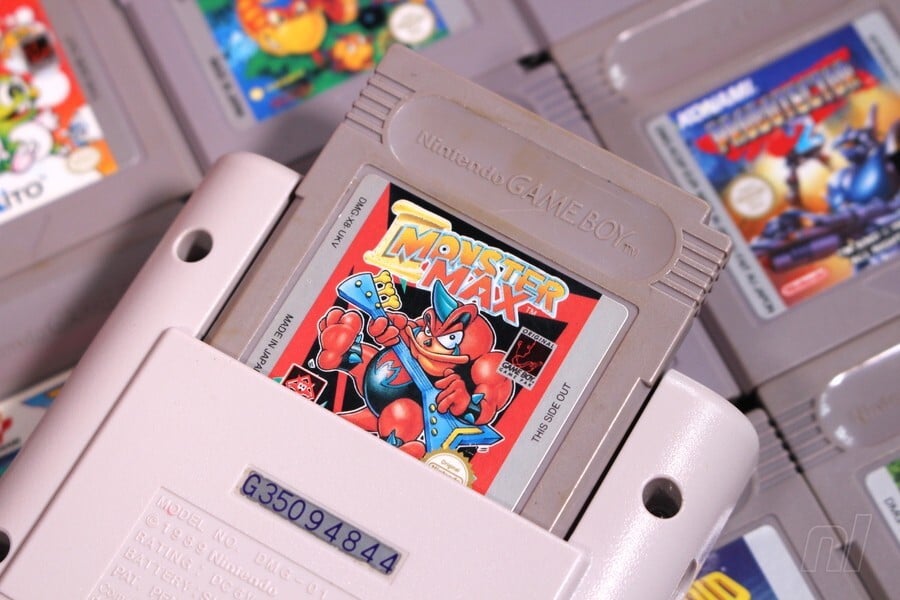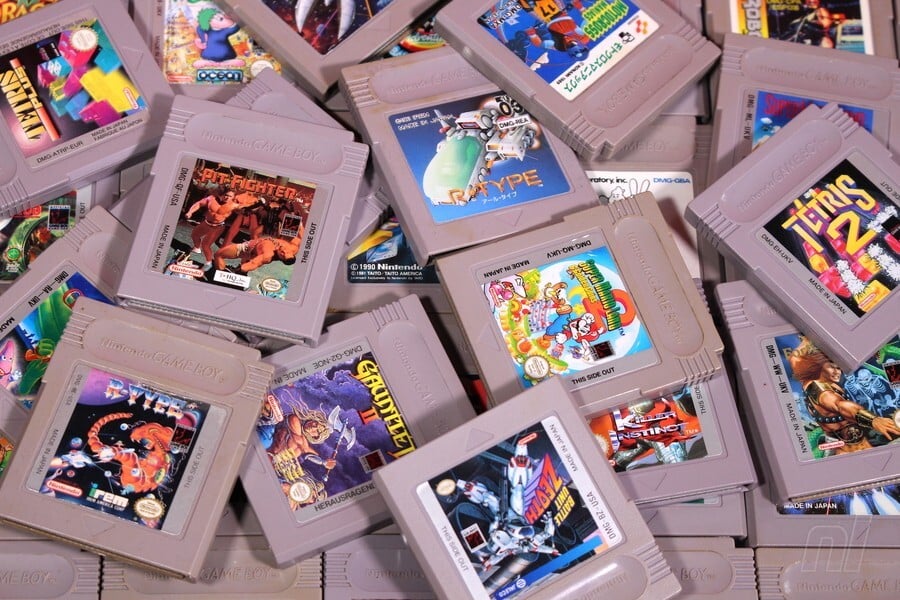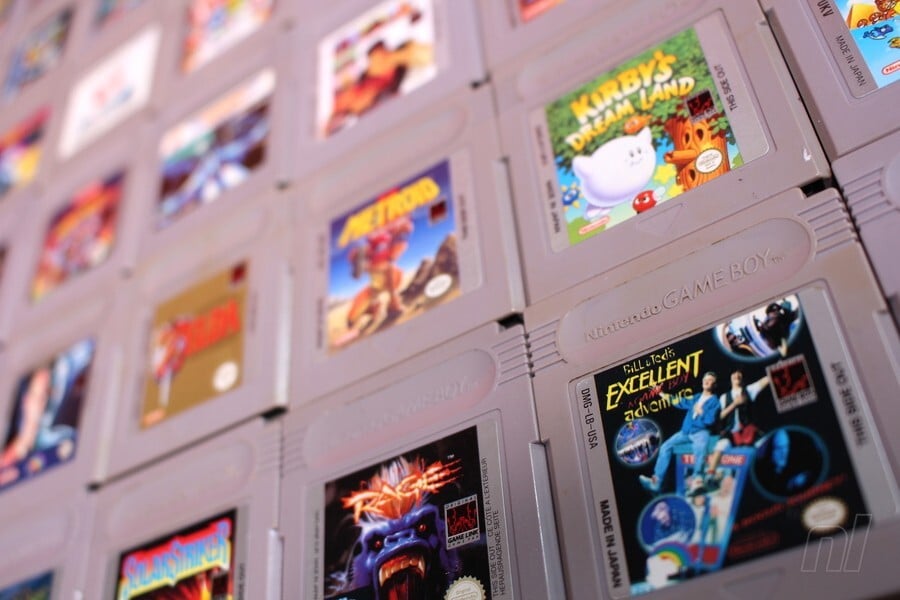
The Nintendo Game Boy turns 30 this Sunday, and to celebrate this amazing occasion we'll be running a series of related features this week, right up to the big day.
The Game Boy turned 30 at the weekend, marking three wonderful decades of portable brilliance. Released in 1989, this monochrome marvel is arguably one of the most important games consoles of all time, and established a period of mobile domination for Nintendo that continues to this very day.
We sat down to speak with some of the people who worked on this legendary system to find out what it was like to develop for and what they think its lasting legacy will be.
We spoke to:
- Paul Machacek – One of Rare's longest-serving employees, Machacek joined the company when it was still based in the Stamper brother's home town of Ashby-de-la-Zouch, England. He worked on many Game Boy titles in the early '90s, and remains at the company now, serving as Test and Product Manager.
- Jon Ritman – A legend of the '80s home computer scene, Ritman's is responsible for seminal 8-bit titles like Batman and Match Day II, but he also worked at Rare briefly, where he created Monster Max for the Game Boy, an isometric adventure title inspired by Ritman's magnum opus, Head Over Heels.
- Cameron Sheppard – Aussie Sheppard moved to the UK to work at Probe, where he worked on Mortal Kombat II on the Game Boy before founding Crawfish Interactive, which would make a name for itself as one of the best handheld developers on the planet.
- Dylan Cuthbert – Cuthbert was part of the team at Argonaut which assisted Nintendo in the creation of Star Fox on the SNES; he also designed and developed X, the first 3D title for the Game Boy.
- Kev Bayliss – A former Rare designer, Bayliss was employed at the UK studio when it was pumping out a seemingly endless series of Game Boy and NES titles.
What were your thoughts when you first laid eyes on the Game Boy?
Paul Machacek: As you know, there’s a bit of a backstory with Rare’s (somewhat optimistic) handheld ambitions at that point, so in some respects, it was odd to see this really little (for its time) console with the 'funny green screen'. Sure, it was bigger and less pocketable than a Game & Watch, but it was really a portable console, with full games that were swappable with carts; bundling it with Tetris was genius. Honestly, a lot of people who wouldn’t normally play games got to see this thing out in public (it wasn’t tied to the family TV) and many bought 'that little machine that plays the funny block game' without ever entertaining the idea of buying another game for it. The biggest feeling was that Nintendo had created the (Sony) Walkman of gaming, and we were hooked.

Jon Ritman: It was a cute little package. We’d never had a proper handheld that we could program real games on, so it was exciting.
Cameron Sheppard: I landed my first programming job at Beam Software in 1989, working part-time to R&D 'a new hand-held about to be released by Nintendo', and having to continually burn EPROMs of my code to push into a test cartridge, as we didn’t have a ROM emulator! I remember at the time thinking it was a great little games console with its very versatile dot matrix display, especially when compared to the Game & Watch handheld games, which was the only thing I could relate it to.
Dylan Cuthbert: I thought it was a funny and cute-looking toy. I seem to remember having 3 to 4 games: Mario, Motocross Maniacs (such a fun game, kind of like Wheelie on the Sinclair Spectrum), Tetris and Qix. They were all a ton of fun!
When the Game Boy arrived in our offices at Rare I was blown away by its capability
Kev Bayliss: Compared with the handheld consoles I'd played in the past (Game & Watch / Grandstand mini arcade machines), when the Game Boy arrived in our offices at Rare I was blown away by its capability. The graphics really impressed me, because for the first time, they were actually animated on a screen that fit snugly into the palm of my hand. Previously everything had been LCD static graphics, usually in solid black, so when I saw these new graphics moving around I was blown away! I think Mario and Tetris were the first games I got to take a look at, and although I was used to working with colours on the NES at the time, I was really excited about using the new hardware. One thing that really caught my attention was the fact that it had 'stereo' sound, and when you put on some headphones to take a listen, I thought it sounded superb!
What was it like to work on from a development perspective?
Paul Machacek: Dead easy. By the time I’d joined Rare I was proficient in both 6502 and Z80 machine code programming, and after having done a couple of NES titles (6502) I found that the Game Boy was architecturally very similar to the NES, but using my favourite processor language. I say architecturally similar because both systems used character mapped screens, character banks, limited Palette designations (obviously more limited on Game Boy), and various other things that meant the thinking behind how you’d set an engine up and drive the hardware was not much different.
To give you an idea of how quickly I got something going, Kev Bayliss and I were charged with writing a wrestling game for it as our first handheld title and I got the Game Boy hardware and development kit and immediately started work, learning what it could do and how it did it. Three months and one week later, WWF Superstars was signed off by our testing department and we moved straight onto our 1st Battletoads game.
I had a big homemade board that plugged into the cart slot on top and had a ribbon cable coming out of the top of the board to connect it to the PC I developed on
The main struggle I had with it was with the logistics of working with the dev kit. I had a big homemade board that plugged into the cart slot on top and had a ribbon cable coming out of the top of the board to connect it to the PC I developed on. The whole thing would be propped up at an angle on my desk and I was constantly hunched over this little laggy screen to see what was going on. I couldn’t really pick the Game Boy up to hold and play it conventionally because of what it was connected to, and I kept getting a sore neck as a result.
Kev Bayliss: Initially, when our US contact at Rare Joel Hochberg mentioned that a new 'monochrome graphics' handheld console was being released during a trip to CES, I was a little worried that it would be difficult to work with. But once I'd created a few sprites, I actually preferred creating graphics on the system because there was less to worry about. It had better 'sprite per line' capability and you just didn't need to worry about as much in general. It was a really simple machine to work on from a graphics point of view, and the three shades you had there to work with were all you needed to create great looking games at the time.
Jon Ritman: Coming from a Sinclair Spectrum perspective it was an odd experience; lots of available memory was great, the lack of a proper high-resolution screen less so (although I could get over it with some complex programming) – the main point though was the processor. To give you an idea I recently, as an experiment, tried to work out how to write a special graphics routine for a Z80 processor (as in a Spectrum) that I had previously written on an 8086 (the processor in early PCs) and what had been easy on the 8086 was very long-winded and slow on the Z80. The Game Boy had what I have always called a castrated Z80; two-thirds of the registers had gone AWOL as had the 16-bit maths instructions, and that made even the simplest of programs very hard work indeed.

Cameron Sheppard: A few years prior to joining Beam I had taught myself Z80 programming on a micro-computer kit which was obviously very limited. So the 1 MHz cut-down Z80 (effectively) CPU in the Game Boy was already familiar to me, and also running at the same speed (effectively). In regards to the video hardware, I thought it was great; I had nothing else to compare it to except the 8x8 LED add-on display of the micro-computer! In hindsight, it was pretty limited, but at the time it was more than adequate. Plus, with the raster interrupts you could be very creative with coding imaginative effects.
Dylan Cuthbert: It was a nice concise system with not many quirks and the chip was a Z80 clone/variant that I was used to programming from my hobbyist ZX Spectrum bedroom coding days. I really enjoyed programming it because it could be pushed to do things that weren’t really considered by the engineers – such as 3D graphics.
What would you say is your favourite Game Boy game?
Dylan Cuthbert: Tetris of course. Although there are many many good games for it, it’s very difficult to choose one over another.
Kev Bayliss: I really enjoyed playing Castlevania: The Adventure. I thought the pace suited the machine really well and I remember sitting in bed at night playing it until I fell asleep. Rather than take a book or magazine to bed, I'd play with the Game Boy until my eyes got tired. Tetris was particularly good for that, but I think Castlevania remains my favourite.
Rather than take a book or magazine to bed, I'd play with the Game Boy until my eyes got tired
Paul Machacek: This is a terrible answer, but the game it shipped with was ideal. It set this handheld console apart as a truly unique experience. Not just because it was portable, but because it allowed you to 'pick up and play for 5 minutes' rather than needing to get bogged down in a marathon gameplay session. If you have a console attached to a TV then you can deliberately set an hour or three aside to 'commit', but the short burst of fun that Tetris offered was perfect for a pocketable take-anywhere device that could just kill time when you had a few minutes spare. Also, we seriously got hooked on multiplayer over the link cable and it was obviously much easier to bring a pair of Game Boys together than a pair of NES consoles. I’ll also note that Tetris had existed previously; it had been released a small handful of times on other systems prior to this, but it was the perfect combination when paired with every single Game Boy shipped.
Jon Ritman: Some time before it was released I saw a copy of Tetris at the Mirrorsoft studios and was completely underwhelmed; it was only when I got a Game Boy that I realised how addictive it was. So from a gameplay perspective that takes the cake, but from a technical point of view, I’m going to plump for my own Monster Max!
Cameron Sheppard: I loved many Game Boy games but if I had to pick one, it’d probably be R-Type as I played it continuously, and I’m sure it inspired me during the development of The Hunt for Red October that I was developing at the time.
What's the legacy of the Game Boy today, and why is it such an important console?
Kev Bayliss: I think it was literally a game changer because we could now create games that you could pick up and play for half an hour, or invest a whole evening with for a week while away on holiday. It made a perfect gift for kids to take away on long journeys or while away at Summer Camp. But for the first time, there was a console out there that also appealed to adults, too. Tetris was the first game to break the news as being 'addictive' and it fixated adults and children for hours, days and weeks on end. Today when I see people focusing on mobile phone games or apps, it always reminds me of the early days when we the Game Boy was unleashed on us all and showed us all just how addictive a good video game can be. There was nothing out there to compete with the Game Boy at the time. It was perfect in every way; the price, the timing of release and the launch titles that addicted people all over the world!

Paul Machacek: Video gaming up until that point was a very niche activity – 'nerds in bedrooms' – once the initial excitement of the late '70s / early '80s arcades had died down. The Game Boy was the first visible sign for many people of an electronic gaming experience, particularly as it was brought out of the home and taken into schools and offices and would be seen by people who would never have been exposed to games before. It took almost 20 years for another killer handheld device to launch in the form of the smartphone (Apple’s original iPhone launch triggering this) and now, just over a decade beyond that, smartphone gaming provides the largest audiences for electronic video games on the planet. Billions of people play games on smartphones, compared with tens or even a hundred million (or so) on more dedicated gaming hardware.
Dylan Cuthbert: I think it brought quick, easy gaming to a huge amount of people; suddenly they could play games no matter where they were, and quite complex ones too, and the batteries didn’t run out too quickly like other attempts at portable gaming at the time. That was probably one of the best design decisions for the Game Boy.
Jon Ritman: Would anyone have even thought of putting games on smartphones if the Game Boy hadn’t happened?
Cameron Sheppard: I think it remains an extremely important console, as it was the first real handheld game system that became a huge success – outselling all other handheld systems, except the Nintendo DS, but that's a whole other story...
Do you think Nintendo will ever revive the Game Boy brand?
Paul Machacek: In 1989 the Gameboy filled a void; you could not play games casually on-the-go. Today everyone has a gaming machine in their pocket regardless of how interested they are in playing games. It would be very difficult to go up against that, although Nintendo has a halfway-house in the Switch console which is portable as well as a home console. Personally, I feel the time for Game Boy branding has passed, however, having worked with Nintendo for a long time I’m clear on the fact that they’re brilliant at surprising people with new software and hardware products, so who knows…..
Today everyone has a gaming machine in their pocket regardless of how interested they are in playing games. It would be very difficult to go up against that
Cameron Sheppard: I’m not really sure, but I’m leaning towards no. I think the name can only really be associated with the original (and the two subsequent models). I’m guessing that if Nintendo releases a new handheld console, they would prefer not to revive the Game Boy brand, using a new name instead.
Kev Bayliss: I've always considered the DS to be a Game Boy successor and I really enjoy playing with it as a portable console. It'd be great if we had a 'Game Boy Mini' with some built-in classics as we've seen over the last couple of years with Nintendo's other machines, but I'm not sure just how small you'd want to go with that. I'd certainly buy one though!
Dylan Cuthbert: I really don’t know, but I hope so! Right now though, the Switch has become the new mobile gaming platform for them and that is doing so well and has so many cool features that it might have superseded the Game Boy completely. Maybe there will be a 'Game Boy Classic' released which is tiny but with a really nice screen, chargeable and has a thousand games on it! I’d buy that for sure.





Comments 12
One of the best consoles ever created full stop
Hey, that in the picture is a backlit modified original Game Boy! Even the ones with a replaced clean lens don't look so good.
Anyway, my first console (not my first system: that honor falls to the MSX), and one I'll always love. I still play it when I got the time between more modern systems. Incredibly fun and important in video game history.
Monster Max is an absolute gem. Love it!
One of my favorite consoles ever!
I can already imagine kids trying to use the gameboy with their greasy hands on the screen and asking if a 4K GameBoy exists, if there is a youtube app, how to connect it to the Wi-Fi and how to share a screenshot... Good thing I don't have kids. They would ruin my childhood.
Interesting article and I appreciated the perspective you brought in via developers who were on the ground floor of the launch.
Best game: Link's Awakening! But most people who weren't gamers loved the Tetris pack-in. Truly, that was brilliant.
Best Game: Pokémon Red/Blue
(In my opinion)
Did this article's name change?
Looking back it is always so amazing what developers did with so little resources.
My first console that I instantly got hooked on. I remember taking it to Disney in Florida and getting excited about playing without having to adjust my viewing angle to see the unlit screen
I was already hooked on gaming, having a nes between me and my brother, but the gameboy meant i could play games anywhere and was truly 'mine'. I remember being amazed that they could fit a whole game like zelda on such a little cartridge!
Great feature btw.
Tap here to load 12 comments
Leave A Comment
Hold on there, you need to login to post a comment...